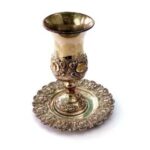Human beings have to eat food in order to stay healthy and alive. However, there are many different kinds and types of food that people can and do eat. This is because different people enjoy eating different foods. Some people like to eat meat and some people are vegetarians In addition, there are some people who like to eat fish and some people who don’t like to eat fish. Plus, due to religious beliefs, there are some people who can’t eat certain foods. Jewish people can’t eat pork or certain types of fish such as shrimp clams, and lobster. Also, it is against the Jewish dietary laws to mix meat and milk. Therefore, Jews shouldn’t eat cheeseburgers, put cheese on their tacos, or drink milk with a steak dinner. However, it is perfectly acceptable for Jews to eat some Russian cuisine. This is because Russian cuisine is delicious. In fact, some foods that are part of Russian cuisine are also included in Jewish cuisine. Now, let’s discover some rich Russian food history.
Russian cuisine gets both its rich history and rich character from the big and multicultural expansion of Russia. Russian cuisine is served very well by a large variety of fish and poultry. It also contains many vegetables and fruits for people to eat and enjoy. Many grains such as rye and wheat provide the beginnings for bread, cereal, pancakes, and vodka. Traditional Russian foods usually centers on delicious soups and stews that are made from a variety of storable fish and meat. In fact, soups have always played an important role in the Russian meal. Therefore, it wouldn’t be a surprise if soup was a vital part of Russian Christmas food. In fact for Christmas or for any other day, people can and often do make one of seven different soups. There are cold soups such as borscht. Borscht is cold beet soup and it is usually served with sour cream. There are light soups, noodle soups, fish soups, cabbage soups, thick soups, and grain and vegetable based soups. Noodle soups usually contain meat, mushrooms, and milk. The cold soup called borscht is included in both Russian and Jewish cuisines. In addition to soups, meat dishes are an important part of Russian cuisine.
In traditional Russian food, three variations of meat dishes deserve to be mentioned; this includes large boiled pieces of meat that are used in soup or porridge, meat served as the second course in a meal, and a cold meat dish that is eaten as a snack. Since both soups and meat dishes are a vital part of Russian cuisine, it wouldn’t be surprising to have both of these for Russian Christmas food. Russian Christmas foods could also include potato pancakes with caviar and blintzes. The most common types of blintzes are cheese and blueberry. Did you know that both potato pancakes and blintzes are a part of both Russian and Jewish cuisine? However, minced meat dishes are not a part of traditional Russian cuisine. Therefore, people may not find them in a Russian food recipe or as a part of Russian food service. However, people may find minced meat dishes in Russian food stores. Bon appetite! This concludes our look at Russian cuisine and Russian food history.


